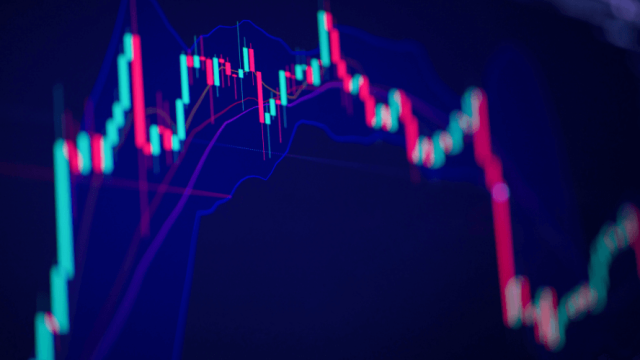The COVID-19 pandemic has sent financial shockwaves through global markets since early 2020. Now, as international economies recover at varying paces, world economists sound the alarm about a new threat: global inflation.
The Organisation for Economic Co-operation and Development (OECD), which consists of 38 worldwide nations, said its members saw the highest inflation rate in April since 2008, when a global recession sent markets into turmoil. In the United States, inflation rose 3.8% over the 12 months preceding May—the highest increase since 1992. And German multinational investment firm Deutsche Bank recently asserted that global economies are “sitting on a time bomb” if they do not address inflation risks.
Understanding why economists are concerned requires a basic understanding of inflation.
What Is Inflation?
As prices for goods rise, currency buys less than it did when prices were lower, essentially making that currency less valuable. The rate at which this occurs is called inflation.
Inflation isn’t necessarily bad. Prices often gradually rise in healthy economies. When consumers expect price increases, they are more motivated to spend in the short term while their money is more valuable. As a result, they stimulate the economy by creating a greater demand for goods and services—and a greater need for labor to meet the demand.
Unchecked inflation, however, results in two scenarios with devastating economic consequences:
- Hyperinflation describes the rapid deterioration of currency value as prices skyrocket. Hyperinflation occurs when prices rise by more than 50% per month over a given time. In Venezuela, hyperinflation surged to a staggering 10 million percent from 2018 to 2019, creating economic instability from which the country is still recovering.
- Stagflation occurs when unemployment rates rise, economic growth slows, and prices soar. The United States went through stagflation in the 1970s amidst a recession that spanned five consecutive quarters while unemployment increased and GDP went into the red.
While the specific circumstances leading to runaway inflation differ, the results are similarly disastrous. That’s why financial experts are concerned about three trends that elevate current inflation risks across the globe.
Trend 1: China Labor Costs Rise
Home to an enormous and inexpensive labor pool for decades, China has long held down global production costs. But that is beginning to change.
Historically, countries turned to China for manufacturing and goods production because of the country’s vast workforce. With a surplus of workers to choose from, companies had little incentive to offer high wages. The low cost of production in China forced other countries to limit their own prices to remain competitive.
Now, China’s labor market is shrinking. Between 1990 and 2010, China’s population between 15 and 64 surged to 75% of the country’s entire populace, creating a wealth of available labor. Since 2017, that population has sharply declined. The number of Chinese workers transitioning from agricultural labor to manufacturing jobs has also peaked, further limiting workforce growth.
Simply put, fewer workers are available in China today than there have been in recent history. As a result, Chinese labor and production costs increase—and create a ripple effect for economies across the world. Without China’s seemingly endless supply of workers driving down global labor costs, other countries no longer have to lower their prices to compete. The worldwide rise in manufacturing costs fuels economists’ inflation concerns.
Trend 2: Global Supply Chains Are in Disarray
In addition to facing the challenges of a contracting workforce, China is one of many countries suffering from global supply-chain complications.
Companies across industries face unprecedented shortages of everything from copper and semiconductors to coffee, corn, and cardboard. As a result, buyers put increased pressure on global supply chains to deliver much-needed resources. The heightened demand drives up the costs of essential goods and commodities, in turn raising prices for consumers.
Consider, for example, copper. Regarded as the bellwether metal of the global economy, copper saw a year-over-year price increase of 80% from May 2020. Its cost is now at a record high. Similarly, the United Nation’s Food and Agriculture Organization saw its food price index reach a record in March after climbing for ten straight months. And in May, the Commodity Research Bureau Index, which measures the price trends of assorted commodities, reached its highest level since 2011.
Experts see no immediate end in sight for the rising prices caused by supply chain disruptions. The Logistics Manager’s Index, which polls industry executives to predict supply chain prices, is accurate approximately 90% of the time. The index is currently at the second-highest level since its inception and predicts little relief over the next year.
Complications are exacerbated by the fact that companies recognize the shortage of essential goods and, in response, try to stockpile resources. The increased demand causes prices to rise at a rate at which monetary value cannot keep up—ideal conditions for hyperinflation.
Trend 3: Consumers Are Ready to Spend, but Goods and Services Are Scarce
Worldwide social distancing measures starting in 2020 gave consumers fewer opportunities to spend money, leading people to save significant sums of cash. Simultaneously, governments provided historic financial stimulus packages that included tax relief and direct payments. As a result, consumers amassed large reserves of savings: U.S. consumers alone are sitting on a $1.6 trillion pile of unspent cash.
As more and more economies reopen thanks to increased vaccine distribution, consumers are ready to spend—but goods and services are at a premium. Part of the scarcity is due to the aforementioned supply chain issues. Used car prices saw a record 10% increase over the past year, thanks largely to semiconductor shortages. Prices for airline tickets also increased in May, due partially to increased costs for fuel.
But commodities shortages are not the only reason for the rise in prices. Dining out costs increased by 0.6% from April to May, the highest jump since September. The price increase is partially due to service industry workers now demanding higher wages, as evidenced by the fact that U.S. hourly wages increased in May for the second straight month. To compensate for the higher worker wages, along with the increased costs of food, packaging, and more, restaurants raise prices on consumers.
Economists worry this trend could spike inflation through a phenomenon known as the wage-price spiral. In this scenario, higher wages give consumers more spending power. With more money available, companies raise prices for goods and services. Workers then seek still higher wages to offset the rising costs of living.
Navigate Global Uncertainty With a Trusted Partner
Not all financial experts are convinced that inflation is an imminent and inevitable threat. Some believe that rising global prices are simply a temporary development as the world emerges from the pandemic. Jan Hatzius, Chief Economist at Goldman Sachs, says that current cost increases are due to pandemic-related outliers that will fade as world economies continue to recover.
Still, economists have good reasons to be concerned, especially considering the reasons outlined above. Amidst the uncertainty, companies benefit from having a trusted global business partner by their side. That’s where Velocity Global comes in.
Our experts help companies diversify their revenue streams and broaden their talent pool by expanding into over 185 countries worldwide. Companies that partner with Velocity Global streamline their ability to hire the right talent and find clients in new markets, so they can offset the rising costs of doing business. Find out how our experts can help you stay competitive in the global marketplace—no matter what challenges arise.
Frequently Asked Questions
What is the Global Inflation Rate?
6.7% according to the UN’s Department of Economic and Social Affairs.
Why is Inflation so High in 2022?
Higher energy costs have fueled inflation in 2022. The annual inflation rate has risen to 9.1% in June of 2022.
Which Country Has the Highest Inflation Rate?
Venezuela. As of May, 2022, Venezuela’s inflation rate was 2,296%.
Topic:
Global Growth



